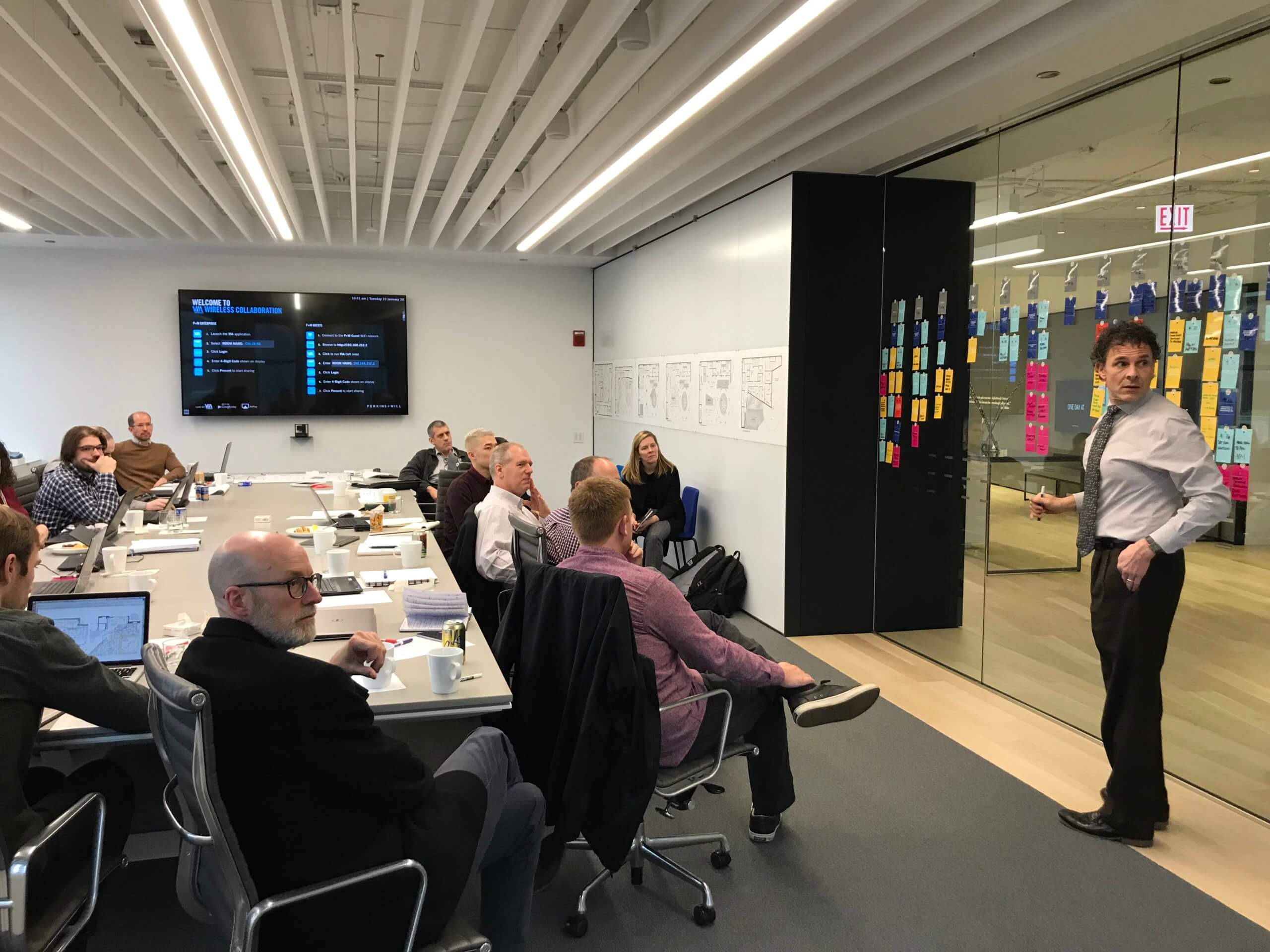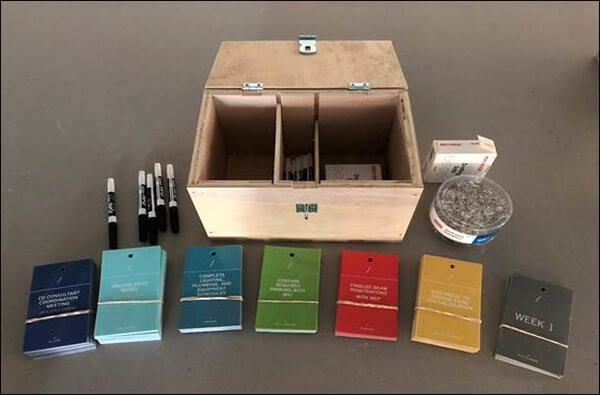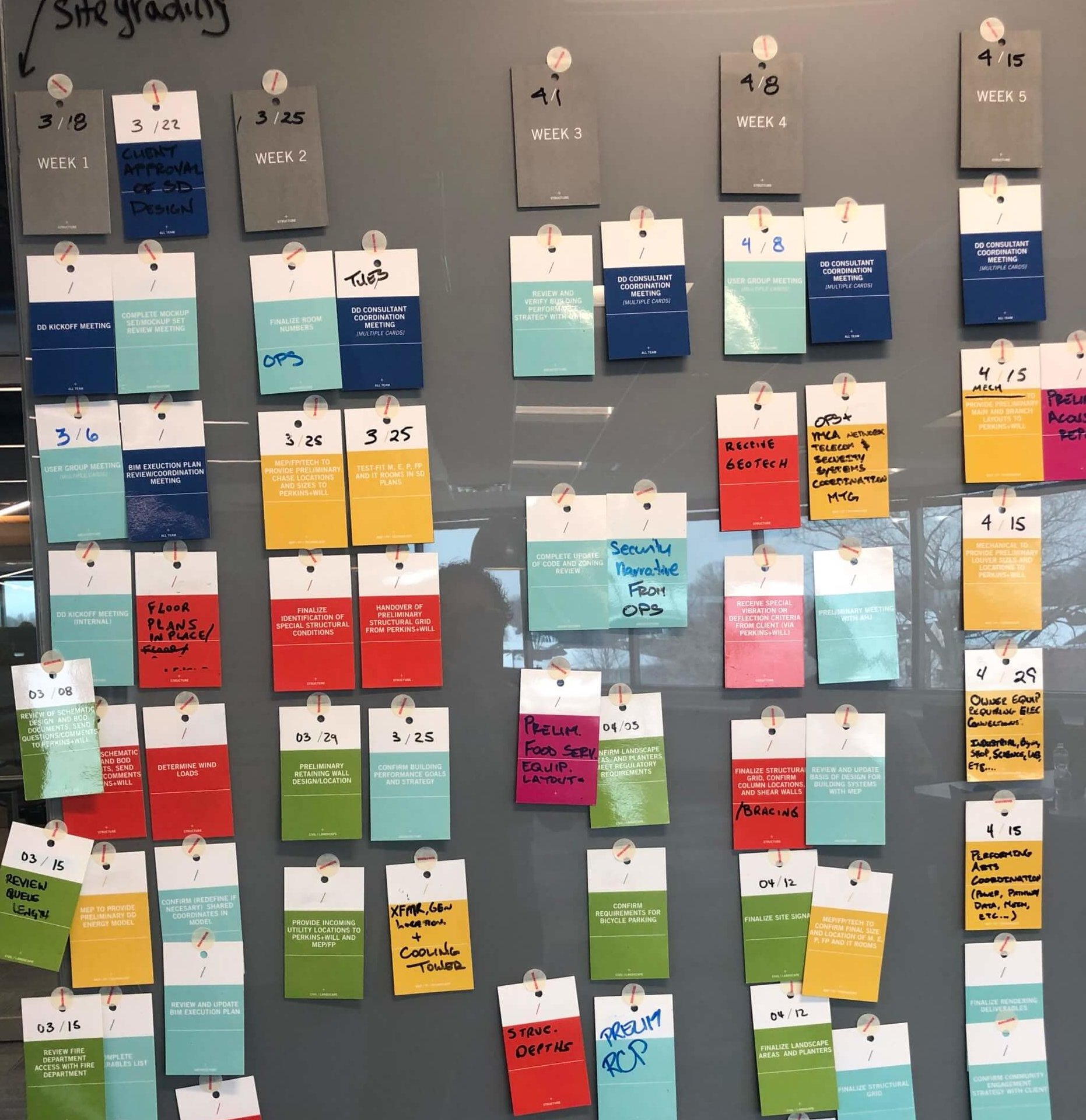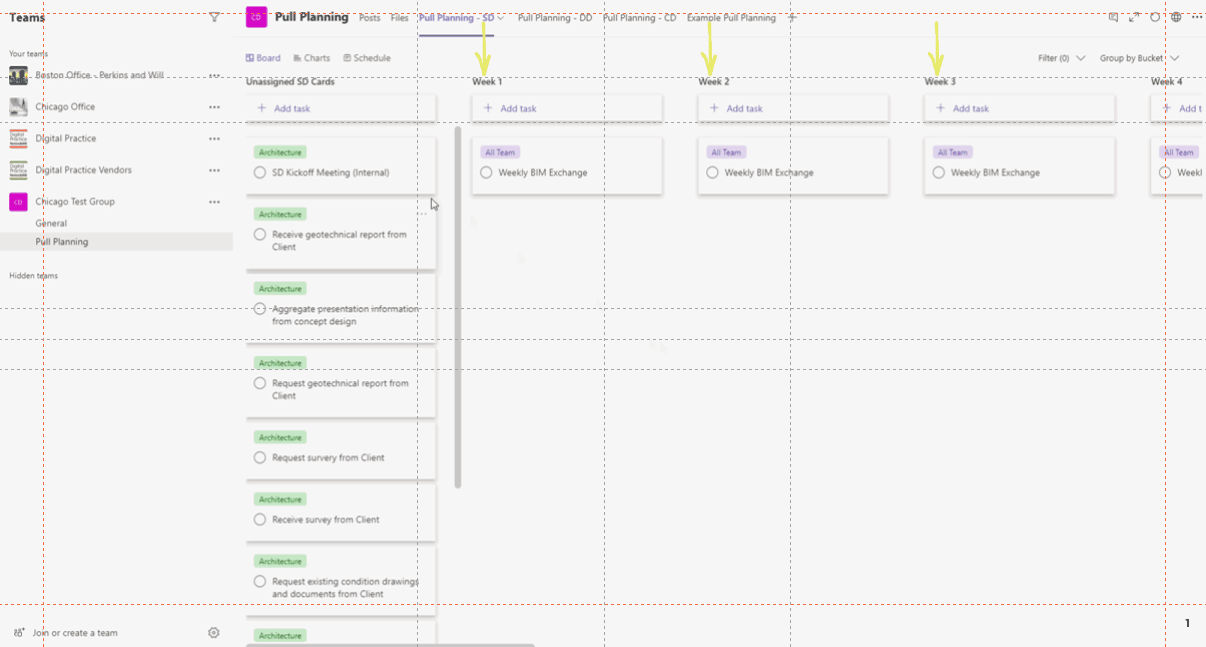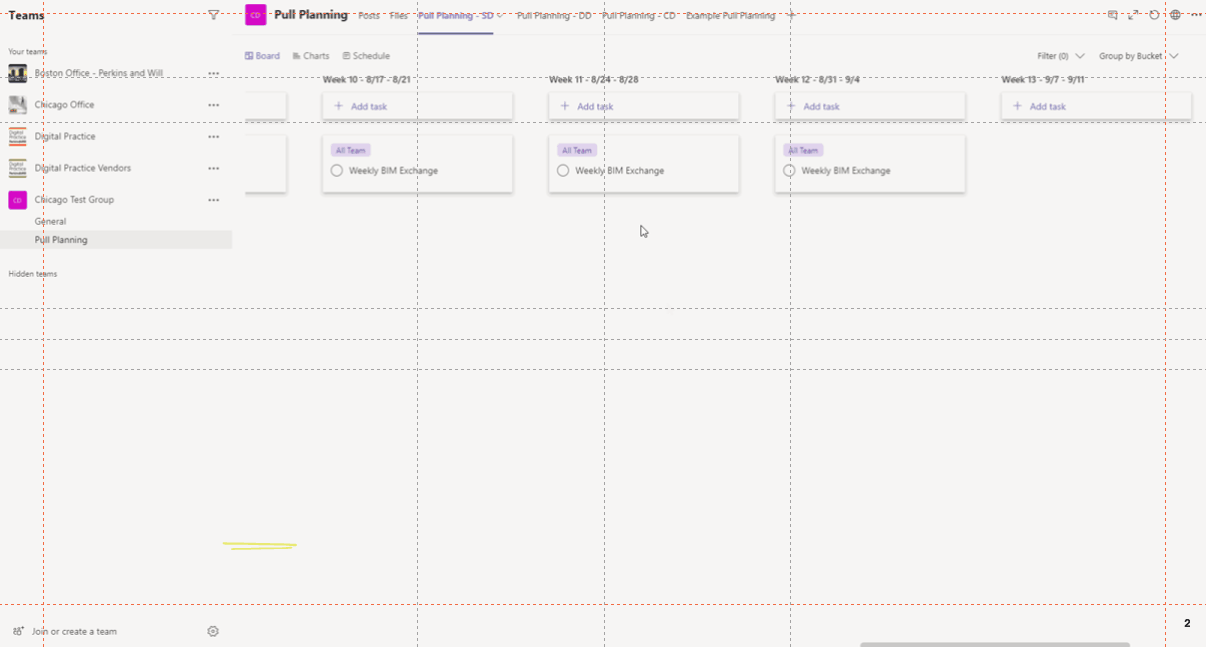“Plan the work, work the plan.” This ethos, says Mark Walsh, our firm’s Global Director of Technical Design, is the key to successful project outcomes. When we kick off each project phase with a coordinated plan, we build consensus with our team, consultants, and clients, and ensure clarity around shared goals.
This approach, known as pull planning, stems from the philosophy of lean construction, which centers on optimizing design and construction by continually improving processes, communication, and efficiency. While we didn’t invent pull planning, we’re advancing it in our own way—and in doing so, giving time back to our teams and our clients.
